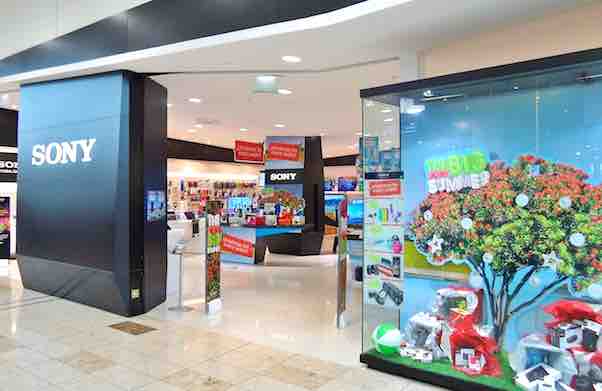
Sony’s marketing mix or 4P (Product, Place, Promotion & Price) effectively supports global business operations. The marketing mix defines how a firm executes its marketing plan and specifies strategies and tactics specific to the business. In the case of Sony’s marketing mix, these strategies and tactics are based on the conditions of the global consumer electronics, gaming, entertainment, and financial services markets. The company’s diverse business operations require complex considerations in developing its marketing strategy. Sony maintains a marketing mix that comprehensively satisfies the organization’s needs in reaching its target customers.
Sony’s marketing mix (4Ps) is based on the varying conditions of the consumer electronics, gaming, entertainment, and financial services markets. The company effectively implements strategies and tactics to maintain a satisfactory share of target markets around the world. The success of this marketing mix contributes to the realization of strategic goals derived from Sony’s mission statement and vision statement.
Sony’s Products
Sony has products in the consumer electronics, gaming, entertainment, and financial services markets. However, the company uses a different categorization to properly group its various products. This element of the marketing mix is called the product mix, which identifies the firm’s products or organizational outputs. The product lines in Sony’s product mix are grouped according to the following product categories or segments:
- Mobile communications
- Game and network services
- Imaging products and solutions
- Home entertainment and sound
- Devices
- Pictures
- Music
- Financial services
- Others
Sony’s Pictures products include motion pictures, television productions, and media networks. PlayStation units and related content are grouped under Game and Network Services. The company’s batteries, semiconductors and recording media are included in Devices. The manufacturing of components and other devices is included in Others. This marketing mix shows considerable diversification of the business, in line with the divisions in Sony’s organizational structure (corporate structure). This diversification limits the effects of market-based risks.
Place in Sony’s Marketing Mix
Sony employs a variety of places or venues for distributing its products to target customers. This element of the marketing mix identifies the places that the firm uses to transact with customers, to distribute and deliver products, or to allow customers to access the products. Sony uses the following places or venues:
- Sony Stores
- Authorized sellers
- Cinemas and media networks
- Official websites
Sony Stores sell genuine products and accessories, including digital cameras, smartphones, and television units. These stores also promote the brand, considering their name. The company also earns through authorized sellers, such as computer stores and smartphone stores. Motion picture products (movies) are delivered to target customers through cinemas and media networks. Sony also has official websites for devices, PlayStation content, and other products. In this element of the marketing mix, Sony maintains a variety of places to distribute its products effectively and to have a wider market reach. Sony’s operations management decisions for its location strategy affect the success of this element of the marketing mix.
Sony’s Promotion
Sony promotes its products in a variety of ways and forms. This element of the marketing mix represents the promotional mix or the methods that the firm uses to communicate with its target customers. The following promotional tactics are used in Sony’s business:
- Advertising (most significant)
- Public relations
- Direct marketing
- Sales promotion
- Personal selling
Advertising is the most significant promotion method in Sony’s business. For example, the company advertises its products through online media and print media. In addition, public relations are used to build brand awareness and enhance corporate image. For example, the company sponsors sports events, music festivals, and other events. Direct marketing is applied to establish deals with organizations that use Sony products. On the other hand, sales promotions are used to attract customers based on discounts and other offers. For instance, the company occasionally implements discounts for its PlayStation gaming products for Black Friday. Employees use personal selling at Sony Stores to persuade target customers to purchase the company’s products. This marketing mix highlights activities that support the company’s market penetration efforts while competing with Apple, Google (Alphabet), and Samsung in the consumer electronics market, with Microsoft in the video game market for Xbox and PlayStation, and with Disney and Netflix in the media and entertainment market. Branding and other business strengths identified in the SWOT analysis of Sony influence the success of this promotion element of the marketing mix.
Price in Sony’s 4Ps
Sony is known for high-quality products. These products are typically sold at relatively high prices. This element of the marketing mix determines how the company sets its price points and price ranges. Sony applies the following pricing strategies:
- Premium pricing strategy
- Market-oriented pricing
- Value-based pricing
The premium pricing strategy involves high prices. Sony’s products are typically priced higher than the market average. The high prices support a premium brand image, which aligns with the product differentiation and business growth objectives of Sony’s generic competitive strategy and intensive growth strategies. On the other hand, the company applies market-oriented pricing for some of its products. This pricing strategy ensures competitiveness, based on the prices of competing products. Sony also implements value-based pricing to determine the appropriateness of some premium prices, based on actual product value and customers’ perceived value of the products. The strategies in this element of the marketing mix show the importance of high prices to ensure high profit margins and to support a premium brand image.
References
- Garg, R., Chhikara, R., Agrawal, G., Rathi, R., & Arya, Y. (2024). Sustainable marketing mix and supply chain integration: A systematic review and research agenda. Sustainable Futures, 100269.
- Sony Electronics – Televisions, Audio, Cameras, Mobile, Video Cameras.
- Sony Group Corporation – Businesses & Products.
- Sony Group Corporation – Form 20-F.
- Tarabasz, A. (2024). The Impact of Digital on Marketing Strategy. In Digital Marketing (pp. 21-37). CRC Press.